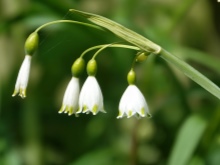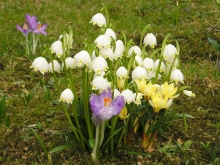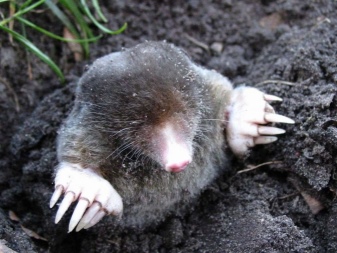White flower: description, varieties, planting and care

Many gardeners choose the white flower to decorate their site, since this culture blooms throughout the season. By choosing several varieties of this unpretentious plant and planting them on one flower bed, you will be able to enjoy the delicate flowers of white or pink shades from spring to autumn.



Peculiarities
White flower is a herbaceous plant intended for planting in open ground. In nature, it grows in Iran, Turkey and Central European territories. The perennial reaches a height of only 40 centimeters. The culture can bloom from spring to autumn, but depending on the characteristics of the variety. This allows you to achieve flowering flower beds throughout the season, if you combine several varieties.
Linear leaves appear with buds. Flowers up to 3 centimeters in diameter either grow on their own, or they gather in umbellate inflorescences. The shade of the buds is usually either white or pink. With the completion of flowering, fleshy seed pods are formed on the shrub.
Rounded shift is colored black. The root system of the white flower looks like brown scaly bulbs with dense perennial roots, which die off over time.



Types and varieties
Spring white flower, also known as white flower, is known in the scientific world as Leucojum vernum. In spring, bells of a beautiful shade of milk appear on the shrub, the petals of which are decorated with greenish spots. The height of this species ranges from 20 to 30 centimeters, and the width barely reaches 8 centimeters. Long dark green leafy plates stretch up to 25 centimeters. Var. carpathicum with a yellow border on the petals, and var. vagneri, which blooms in the southern regions already at the end of winter.



The name of the summer white flower in Latin sounds like Leucojum aestivum. Although in the south the culture blooms already at the end of April, in the middle lane the buds open in the first week of July. This species is listed in the Red Book of the Russian Federation, but it is also quite successfully grown in garden plots.
The height of the shrub ranges from 45 to 60 centimeters, and the width is about 8 centimeters. The leaf blades of a dark green hue stretch up to almost 40 centimeters. The length of one flower is 2 centimeters.



Gravetye Giant is one of the popular decorative varieties of the summer white flower. The height of the Graveti Giant shrub is 90 centimeters, especially if the crop is planted near water. The plant feels great in dampness and in partially shaded places.
Autumn white flower - Leucojum autumnale blooms in September. The height of the shrub varies from 10 to 15 centimeters, and the width is 5 centimeters. The leaf plates are relatively short - their length is only 16 centimeters. The flowers are white, but have a reddish base. The bud is only 1 centimeter long.


How to plant?
Planting of white flowers in open ground is carried out from spring to autumn, depending on the variety of culture. To be more specific, the spring white flower is planted from March to April, the summer one is sent to the site from May to June, and the autumn one must be planted in September. Usually, not one copy is planted, but several at once - about 10 pieces. The land is necessarily loosened and provided with a high-quality drainage layer. The depth of the grooves should be approximately 5-8 centimeters, although the exact value is determined depending on the available soil. If the soil is loose, then it will be enough to bury it to a depth corresponding to the size of two bulbs, and if it is heavy, then to a depth equal to the dimensions of one bulb.
At the next stage, the planting material is covered with soil mixture. The surface of the bed is leveled and irrigated with high quality. It makes sense to mulch the trunk circle immediately with compost.


When choosing a site for growing a white flower, it is important to remember that regardless of the type and variety, he prefers partial shade. It is good if the place is located near a reservoir or even a bush. The soil itself should be nutritious, moist and rich in humus, and either gravel or river sand can be used as drainage. If the site has become impoverished, then rotted manure can be added to the ground.
It is necessary to mention the peculiarities of using the bulbs, which are usually purchased in nurseries. Dense specimens should be chosen, devoid of overgrown roots or stems. It is strongly not recommended to purchase dented or slightly rotten bulbs. There should be no base or any hints of mold. They can stay in the air for no more than one month, after which the seed should be removed in a bag with sawdust.



How to take care of it properly?
White flower care consists of irrigation, fertilizing and other basic procedures.
Watering
In spring, watering the culture is not particularly needed, since the plant receives all the necessary moisture from the soil saturated with melting snow. However, if the winter was snowless, and the early spring brought joy with the absence of precipitation and high temperatures, then the culture will have to be watered with settled and warmed up water. At the same time, it is important to ensure that drops do not fall on the sheet plates. It should also be mentioned that lack of watering will not lead to the death of the plant, but will change its appearance not for the better... Further, watering is carried out as the topsoil dries out.


Top dressing
From fertilizers, the white flower will well accept mineral complexes containing nitrogen, but in small quantities - in order to stimulate the growth of green mass, but not to disrupt the flowering process. In addition, phosphorus and potassium must be present in the composition. Phosphorus contributes to the appearance of large, beautiful flowers, and potassium is responsible for the formation of healthy bulbs.



Wintering
The white flower has good frost resistance, so in most cases it does not need additional shelter. In the case when especially low temperatures are expected in the winter months, it makes sense to construct a shelter made of spruce branches.
It should also be mentioned that throughout the whole season, it is necessary to eliminate weeds that can interfere with the development of the white flower... Loosening is carried out only on those shrubs that are located on the side of the flower bed, so as not to damage the rest of the closely located specimens. Overgrown shrubs need to be planted, but only at the end of flowering, that is, in the fall.


Reproduction methods
The white flower propagates either with the help of seeds or by dividing the bush. The first method is less common, since flowering in this case occurs only 3 or 4 years after planting. Nevertheless, the seed method is still chosen by some gardeners. The collected seeds must be planted immediately in the box, otherwise they will lose their germination. In winter, the surface of the plantings can be sprinkled with snow, after which the container can be immediately rearranged to a cool place to carry out the required stratification.
In principle, seeds can be immediately planted in open ground, deepening them by 3-4 millimeters and watering them with settled water.
If the seeds are purchased in a store, then you should definitely use a drug that stimulates growth and development. Until the sprouts appear, the plantings are tightened with cling film.


The division of the shrub is carried out for 5, 6 or 7 years of culture habitat. The shrub is carefully dug up, and the bulbs are separated from one another. If any of them deteriorate or get sick, then it's time to remove them. After dividing, each onion is sent to its own individual well. The spring white flower can be propagated in this way after the end of flowering, that is, at the beginning of summer, but the division of the remaining varieties is better to transfer to autumn or even to the beginning of next spring.

Diseases and pests
The white flower often suffers from the effects of not only insects, but even small rodents such as moles and mice. It is possible to get rid of the latter only with the help of special baits filled with poison. An alternative way is to treat the plantings with mint or wormwood broth. Since rodents cannot stand these odors, the procedure carried out several times will scare them away.


If slugs appear on the white flower, then traps will come to the rescue again. The devices are filled with dark beer and placed around the perimeter of the flower bed. The use of soda ash will also be effective, the powder of which crumbles near the bushes.


In order to cope with scoop butterflies, you can simply try to collect them mechanically.
Another successful way would be to use an infusion of burdock and wormwood. In principle, the use of suitable chemicals will also be effective.


Quite often, the white flower also suffers from common diseases. For example, mold can develop on the bulbs, resulting in overly dense plantings... In this case, it is imperative to eliminate the damaged areas, and then treat the shrubs with fungicides.
Chlorosis falls ill with an insufficient intake of iron. It will be possible to determine the problem if you examine the leaf plates - they, as a rule, turn yellow and twist. The problem is solved quite simply - it is enough to add the required element, that is, iron, to the soil.
If the leaves of the white flower are covered with orange spots, then rust is to blame. Diseased shrubs cannot be saved, so they will have to be completely eliminated, and the remaining plantings must be treated with fungicides.



See the next video about the white flower.







































































































The comment was sent successfully.